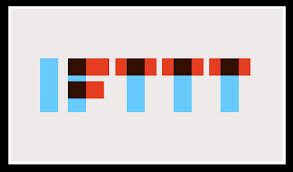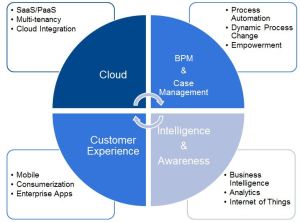Introduction
When is the last time you visited a bank or even talked to a bank representative? When is the last time you contacted a travel agent? Where previously we’d have used a travel agent many of us now prefer to research and book the individual components of our holiday ourselves. The history of the internet has been a story of personal empowerment. Empowered customers, especially younger demographics, are today more than happy to resolve problems for themselves valuing the convenience, speed and anonymity offered by frictionless self-service experiences.
In 2015 Forrester Research Inc. indicated that “Web self-service interactions overtook all other channels” and that “respondents reported using the FAQ pages on a company’s website more than speaking with an agent over the phone”. The future of customer service is thus quite clearly self-service. However what is the future for self-service itself?
Intelligent Virtual Assistants
Intelligent virtual assistant (IVA) use is seeing rapid adoption across multiple industry sectors. IVAs attempt to humanize web self-service by delivering knowledge and information to customers via a human like interface. The attraction for businesses is obvious. Unlike a customer service representative IVAs can serve thousands of customers at once, they are available 24/7, across all channels and the experience is consistent.
However the predominant IVA experience today of typing in questions and receiving spoken answers via a computer generated assistant is unsatisfactory, unrealistic and, in my opinion, slightly creepy. Having a computer designed, cartoonish image acting as the face of your organization is also a risk. As a result many organizations, particularly in the retail sector are using IVAs as an opportunity for differentiation and a visual extension of their basic web self-service technologies rather than as a key customer engagement channel.
We are still at the nascent state of IVA development. The next step in its development will be to make the customer experience more realistic. This means replacing the requirement for users to type questions with speech recognition.
Speech Recognition
Today, four of the largest global IT organizations — Apple, Google, Microsoft and Amazon— offer speech recognition software. Apple was the first mover with Siri. Google followed with its own natural language user interface, Google Now, Microsoft came to market with Cortana and most recently Amazon has released its voice-controlled personal assistant, Alexa. So why do we have this sudden interest in voice recognition? The answer lies in both self-service and the internet of things (IoT).
Speech recognition has the potential to transform the self-service user experience, making it a more natural experience and most importantly hands free. Speech recognition can deliver service to users anywhere and in any situation or context. Initially we will see IVA vendors augmenting their solutions with speech recognition capabilities to offer voice driven information search and retrieval such as video on demand. Already retailers have begun to explore the potential of voice driven self-service with for example Domino’s Pizza introducing Dom their virtual voice ordering assistant.

WSS and the Internet of Things
Self-service will move beyond voice driven information search and retrieval to deliver the ability to trigger and interact with processes using speech.
Mistakenly many view the IoT in terms of smart devices; in terms of smart thermostats, kettles, fridges and wearables. However the real power in IoT is in the data created by the sensors themselves. Organizations that can utilize this data and deliver services based on this data will dominate the IoT market. Already some of the most successful commercial IoT solutions are providing services rather than simply devices to consumers. In-car telematics is now widely used in the insurance industry today to monitor driver performance and to adjust insurance premiums accordingly. In medicine, heart implants are being used that send data to physicians that can be analyzed to identify any slowing of heart rhythm or rapid heartbeats. In the public realm, IoT will be used within Smart Cities to provide services to constituents that will, for example, reduce congestion, optimize energy use and support public safety. The common theme in all of these examples is that the IoT is being used to provide services with little or no input required by the individual. The IoT and the devices themselves are for the most part invisible.
As humans we do not have the capacity to engage with huge numbers of IoT devices. Do we really want to be alerted and prompted on a regular basis by multiple frivolous IoT devices all competing for our attention? As a result the IoT will be almost invisible, delivering services for us in the background to our lives and interrupting us only when a decision is required or a result has been achieved. Successful IoT solutions will remove complexity from our lives rather than add to it.
The trigger and interaction method for all of these IoT services will be speech. With so many potential IoT devices and services, voice control provides a simpler, quicker and more convenient method of interaction rather than an app and a UI.
The Personal Virtual Assistant
Self-service will eventually break free of the enterprise and become a key part of our personal lives. Mobile phone vendors have been working on personal assistants since almost the development of the first app. Your iPhone comes preinstalled with apps such as Apple pay, calendar, reminder, notes and a ticket and boarding pass wallet. In addition Android devices arrive with a password manager, family location services and account status apps. Despite the fact that there are millions of apps available the majority of us use only a few apps daily. It appears that app fatigue is starting to set in. Siri, Google Now and Cortana will be the catalyst for turning these apps, many seldom used and sometimes referred to derogatively as bloatwear, into something more useful and easier to use.
The personal virtual assistant will be the ultimate self-service technology that brings together multiple technologies including speech recognition, knowledge management, wearables, IoT, complex event processing and artificial intelligence. This is imminent. Today for example Microsoft Cortana, if approved by the user, can scan your email to see if you have a flight coming up, then use the information to alert you when it’s time to leave for the airport.
Service scheduling, booking a restaurant or flight, insurance renewals, ensuring your finance products are on the best rate of interest, price comparisons, personal security and health monitoring — all of these are important yet mundane processes we perform on a daily basis that most of us would be happy to outsource to a personal assistant. In effect the personal assistant starts to act as an airbag for our lives, ready to step in when we need it, not constantly competing for our attention.
Conclusion
Self-service is the future of customer service and its evolution is inextricably linked to developments in speech analytics and the IoT. In the IoT world speech will be the most convenient gateway to access information and services. Self-service will go beyond the simple search and delivery of information to the delivery of more complex customer service processes.
Ultimately we are looking at a post app world where information and data from multiple sources including devices is combined to deliver services. Then when you need information or a service you’ll just ask for it.
Like this:
Like Loading...
 emergence of artificial intelligence or speech recognition as a customer service user interface. Artificial intelligence is slowly creeping into our everyday lives. Today, four of the largest global IT organizations – Apple (Siri), Google (Google Now), Amazon (Alexa) and Microsoft (Cortana) — offer speech recognition software. Customers will be able to interact with the chatbot using either text or voice recognition software. Long term, voice recognition software will become the dominant UI for customer engagement and well as for interaction with the Internet of Things (IoT).
emergence of artificial intelligence or speech recognition as a customer service user interface. Artificial intelligence is slowly creeping into our everyday lives. Today, four of the largest global IT organizations – Apple (Siri), Google (Google Now), Amazon (Alexa) and Microsoft (Cortana) — offer speech recognition software. Customers will be able to interact with the chatbot using either text or voice recognition software. Long term, voice recognition software will become the dominant UI for customer engagement and well as for interaction with the Internet of Things (IoT).




